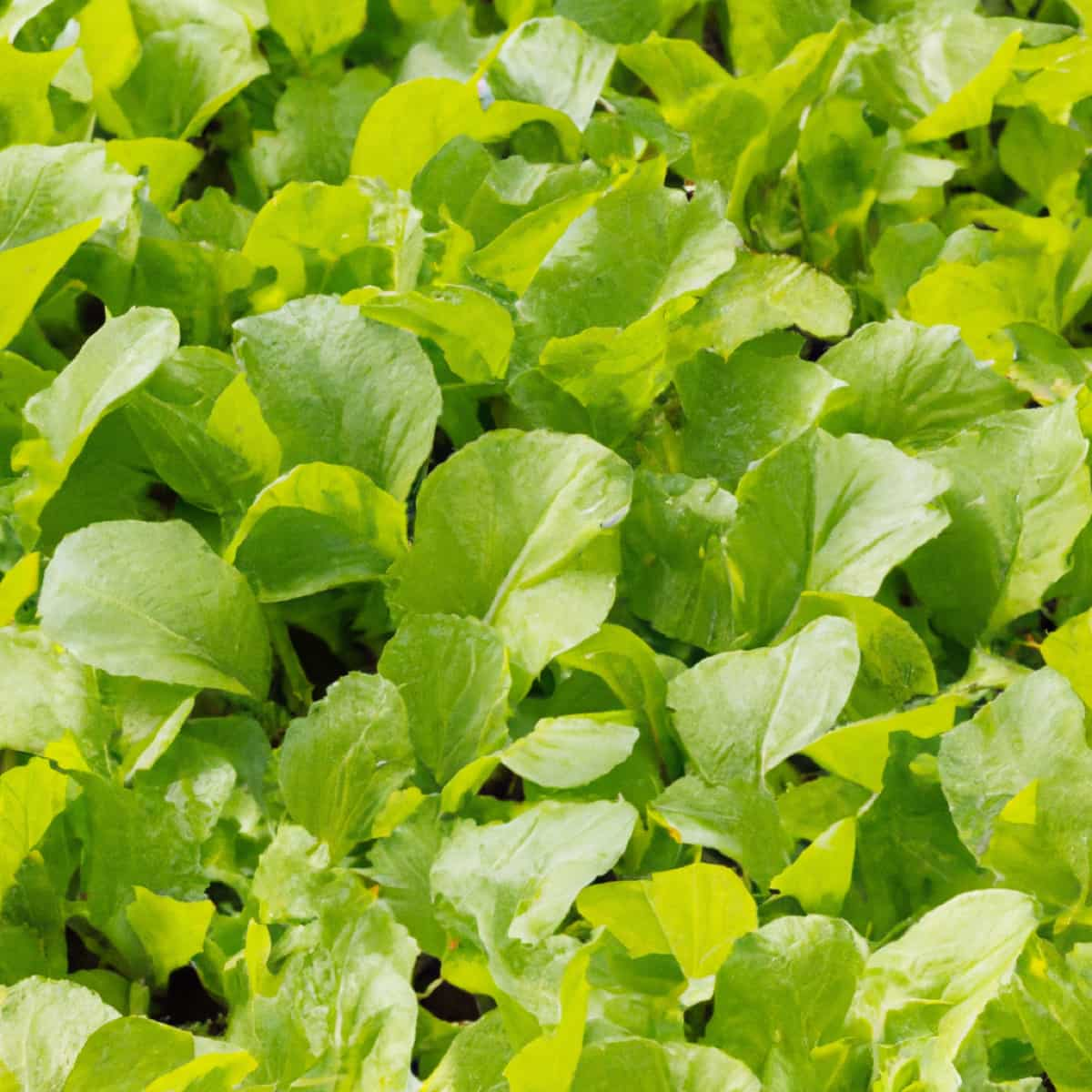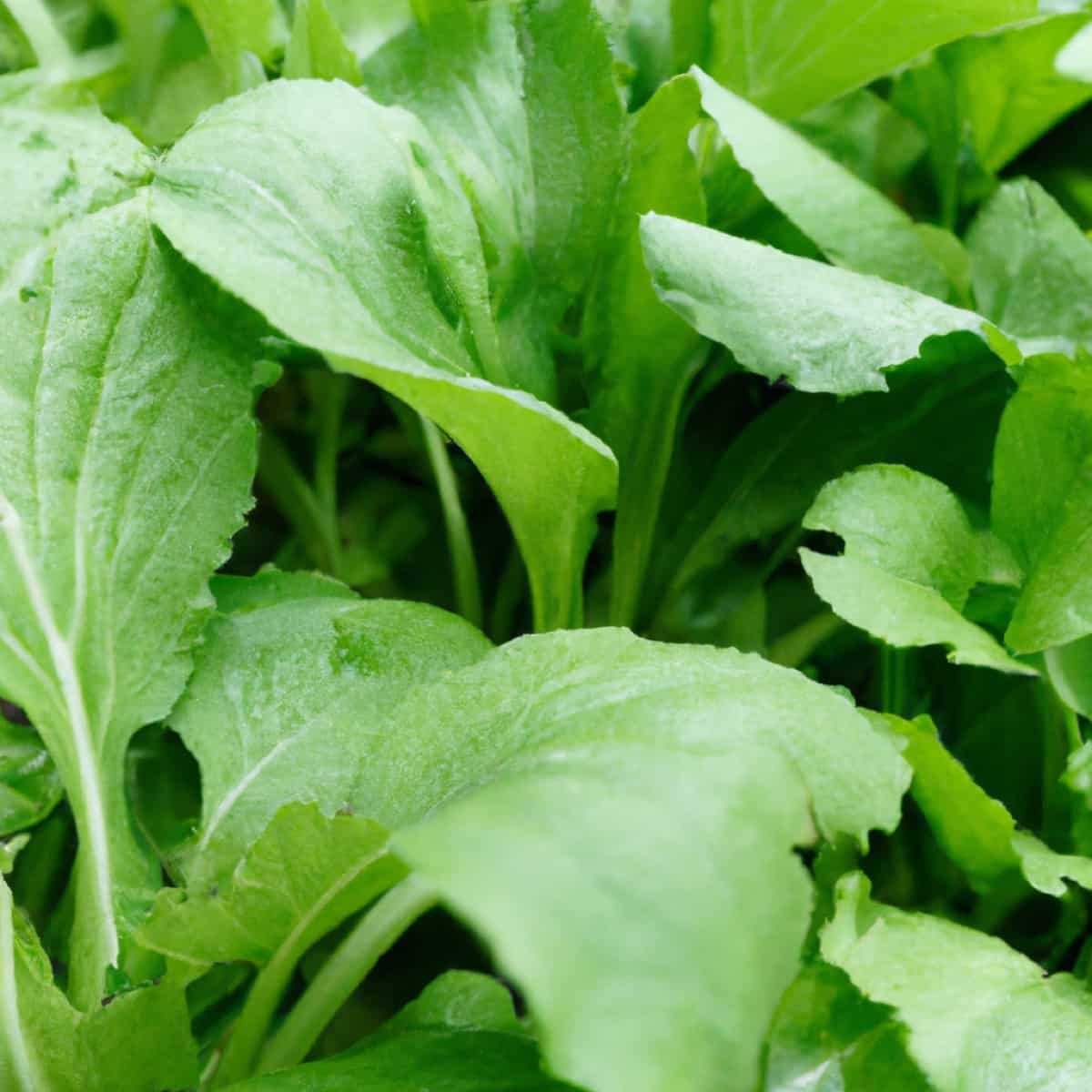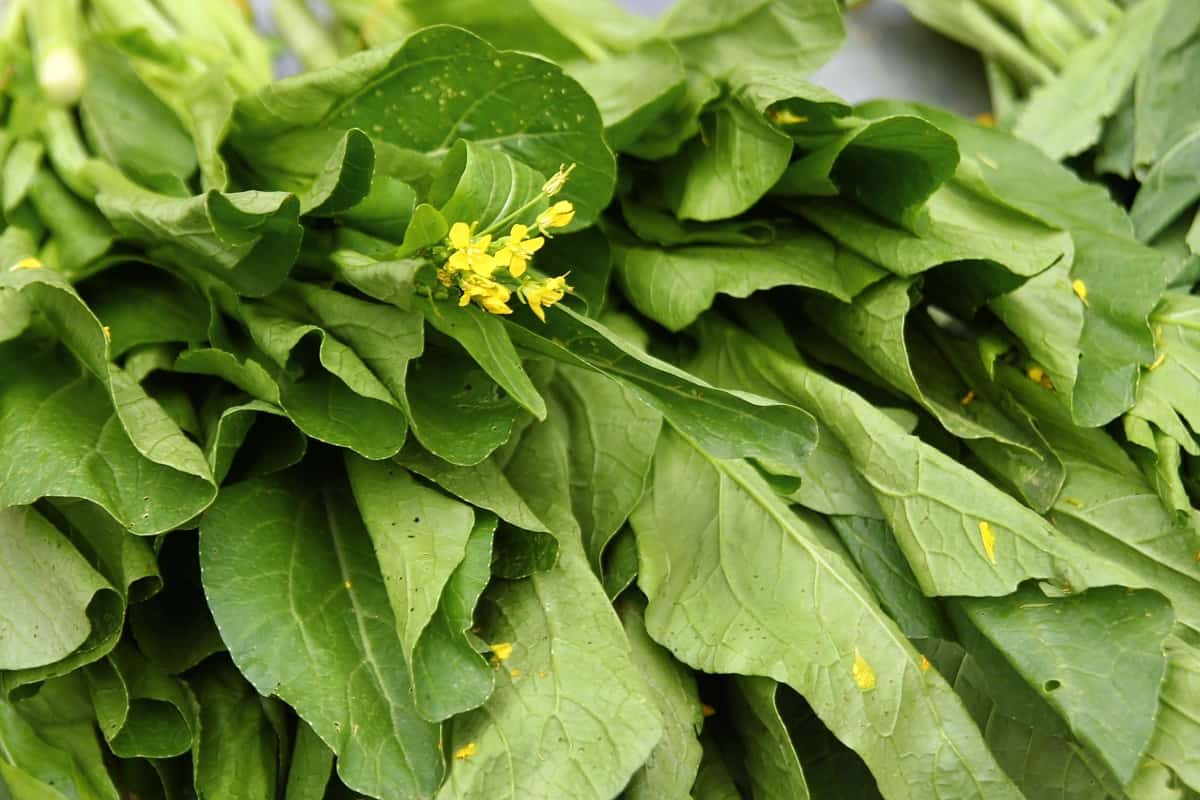Mustard greens are leafy vegetables that are commonly used in various cuisines around the world. While they are generally easy to grow and care for, they can still encounter common problems that may affect their growth and overall health. This article will discuss common problems with mustard greens, along with their treatments and solutions.

9 Common Problems With Mustard Greens
Why Are My Mustard Green Leaves Turning Yellow?
Nutrient Deficiency: Yellowing leaves can indicate that your mustard greens lack essential nutrients. Yellowing of leaves is due to a deficiency of nitrogen, iron, or magnesium. To treat yellowing leaves on plants, you can apply a balanced fertilizer that contains these nutrients.
Soil pH Imbalance: Mustard greens prefer slightly acidic soil with a pH range between 6.0 and 6.8. If the soil pH is too high or too low, it can affect nutrient availability and cause plant leaves to turn yellow. Test your soil pH and adjust it accordingly using amendments like sulfur for lowering pH or lime for raising pH.
Pests and Diseases: Mustard greens are susceptible to various pests and diseases, such as aphids, caterpillars, or fungal infections. These can cause damage to the leaves, resulting in yellowing. Inspect your plants regularly and take appropriate measures to control pests, such as using insecticidal soap or organic pest control methods.
Controlling Pests on Mustard Green Plants in the Garden
Mustard Bug Infestation: Mustard bugs, or flea beetles, are small, dark-colored insects that feed on mustard-green plants. They cause damage by chewing tiny holes in the leaves, giving them a characteristic “shot-hole” appearance. Spraying organic insecticides, such as neem oil or insecticidal soap, on the mustard greens can help control mustard bug populations.
Mustard Sawfly: Mustard sawflies are caterpillar-like insects that feed on the leaves of mustard-green plants. They can quickly defoliate the plants if left unchecked. Organic Bacillus thuringiensis (Bt) Insecticides: Apply Bt-based insecticides to the mustard greens following the product instructions. Bt specifically targets caterpillar-like pests and is safe for beneficial insects.
Mustard Aphid: Mustard Aphids are small, soft-bodied insects that feed on the sap of mustard-green plants. They reproduce rapidly and can cause stunted growth and wilting of the plants. Apply insecticidal soaps to the mustard greens, specifically formulated for aphid control.
In case you missed it: How to Increase Yield in Mustard: Explained in 10 Simple Steps for Higher Productivity and Profit

How to Prevent Wilting in Mustard Green Plants
Watering: Ensure that your mustard green plants receive adequate water. Water them regularly, but avoid overwatering, as this can lead to root rot. It is best to water them deeply; the soil must dry slightly between waterings.
Shade: Mustard green plants prefer partial shade, especially in hotter regions. They can wilt if exposed to direct sunlight for extended periods. Consider providing shade using shade cloth or placing them in a location with filtered sunlight.
Pest control: Monitor your plants for any signs of pests, such as aphids or caterpillars, as they can cause damage and stress. If detected, use appropriate insecticides or organic pest control methods to eliminate the pests and prevent wilting.
Identifying and Treating Fungal Diseases in Mustard Greens
Fungal diseases can significantly impact the growth and productivity of mustard greens. Farmers and gardeners must be able to identify and treat these mustard diseases effectively. Below are the diseases of mustard and their management.
Alternaria Blight of Mustard: Alternaria blight, caused by the fungus Alternaria brassicae, is a prevalent fungal disease that affects mustard greens. Fungicides containing active ingredients such as chlorothalonil or mancozeb can be used to control the disease. Follow the label directions for proper application.
White Rust of Mustard: White rust, caused by the fungus Albugo candida, is another fungal disease that affects mustard greens. Fungicides containing active ingredients such as copper compounds or triadimefon can effectively control the disease.
Mosaic Diseases of Mustard: Mosaic diseases in mustard greens are caused by viruses, including the Turnip mosaic virus (TuMV) and the Cauliflower mosaic virus (CaMV). The best approach is to prevent the disease using virus-free seeds and practicing good weed control to eliminate potential virus reservoirs. Remove and destroy infected plants to control further spread.
Yellow Spots on Mustard Green Leaves: Causes and Solutions
Alternania blight of mustard greens causes yellow spots on its leaves. Planting mustard greens with infected seeds, lack of proper air circulation, and planting mustard greens too close together promoting the spread of fungal diseases. The most noticeable symptom of alternaria blight is the appearance of yellow spots on mustard-green leaves. These spots start small and gradually enlarge to form irregular-shaped patches. Mancozeb is a broad-spectrum fungicide that provides excellent control against Alternaria blight.
Addressing Root Rot Issues in Mustard Green Plants
Symptoms: Yellowing or browning of leaves, wilting, the foul smell emanating from the roots, darkened or mushy roots.
Preventive Measures
- Avoid overwatering and ensure proper drainage. The soil must be allowed to dry out between waterings.
- Plant mustard green seeds or seedlings at the recommended spacing to allow for proper air circulation and minimize moisture buildup.
- Thiophanate-methyl: This systemic fungicide effectively controls various soil-borne pathogens, including those causing root rot in mustard green plants.
In case you missed it: Frequently Asked Questions About Mustard Farming

Dealing With Deformed Mustard Green Leaves in the Garden
- Insufficient levels of nutrients such as nitrogen, potassium, or magnesium can lead to leaf deformities. Regularly monitor and adjust the nutrient levels as needed throughout the growing season.
- Various diseases like powdery mildew, downy mildew, and mosaic virus can cause deformities in mustard-green leaves. Apply appropriate fungicides or biological control agents to manage disease outbreaks effectively. Additionally, consider selecting disease-resistant mustard green varieties.
- Certain pests, such as aphids or caterpillars, can cause damage to mustard green leaves, resulting in deformities. To control these, use organic insecticides, introduce beneficial insects, or manually remove pests from the plants.
Common Nutrient Deficiencies in Mustard Green Plants
| Nutrient Deficiency | Symptom | Best fertilizer |
| Nitrogen | Pale yellow leaves, stunted growth | ammonium nitrate or urea |
| Phosphorus | Purple or reddish leaves, reduced flowering | superphosphate or bone meal |
| Potassium | Marginal leaf scorching, weak stem | potassium sulfate or potassium nitrate |
| Iron | Yellowing leaves with green veins, interveinal chlorosis | Iron chelate or iron sulfate |
Organic Remedies for Common Problems in Mustard Greens
White Spots on Mustard Greens: Various factors, including fungal diseases like powdery or downy mildew, can cause white spots on mustard greens. Spray baking soda and liquid dish soap solution on the affected plants to control powdery mildew. Make sure to cover both sides of the leaves.
Bug Infestation on Mustard-Green Plants: Using essential oils such as peppermint, rosemary, clove, and thyme can help remove mustard bugs and other pests. The only thing you need to do is mix four to five drops of any of these essential oils with one cup of water. A spray bottle should be filled with this mixture and sprayed on the mustard greens with bugs and aphids.
In case you missed it: A Step-by-Step Guide for Growing Mustard Microgreens: DIY in Simple Way from Seeds in Containers

Conclusion
You can ensure healthy growth and productivity by being aware of these common problems with mustard green plants and implementing the suggested treatments and solutions. Monitor your plants regularly, provide optimal growing conditions, and promptly resolve issues.
- Feed Your Flock for Less: Top 10 Tips to Save on Chicken Feed
- Ultimate Guide to Ossabaw Island Hog: Breeding, Raising, Diet, and Care
- Hatching Answers: The Top 10 Reasons Your Chickens Aren’t Laying Eggs
- Eggs and Economics: Breaking Down the Cost of Raising Backyard Chickens
- Defend Your Greens: Proven Methods to Keep Iguanas Out of Your Garden
- Ultimate Guide to Cinnamon Queen Chicken: A Comprehensive Guide for Beginners
- Ultimate Guide to California Tan Chicken: Breeding, Raising, Diet, Egg-Production and Care
- Ultimate Guide to Marsh Daisy Chicken: Breeding, Raising, Diet, and Care
- 10 Types of Chicken Farming Businesses You Can Start for Profits